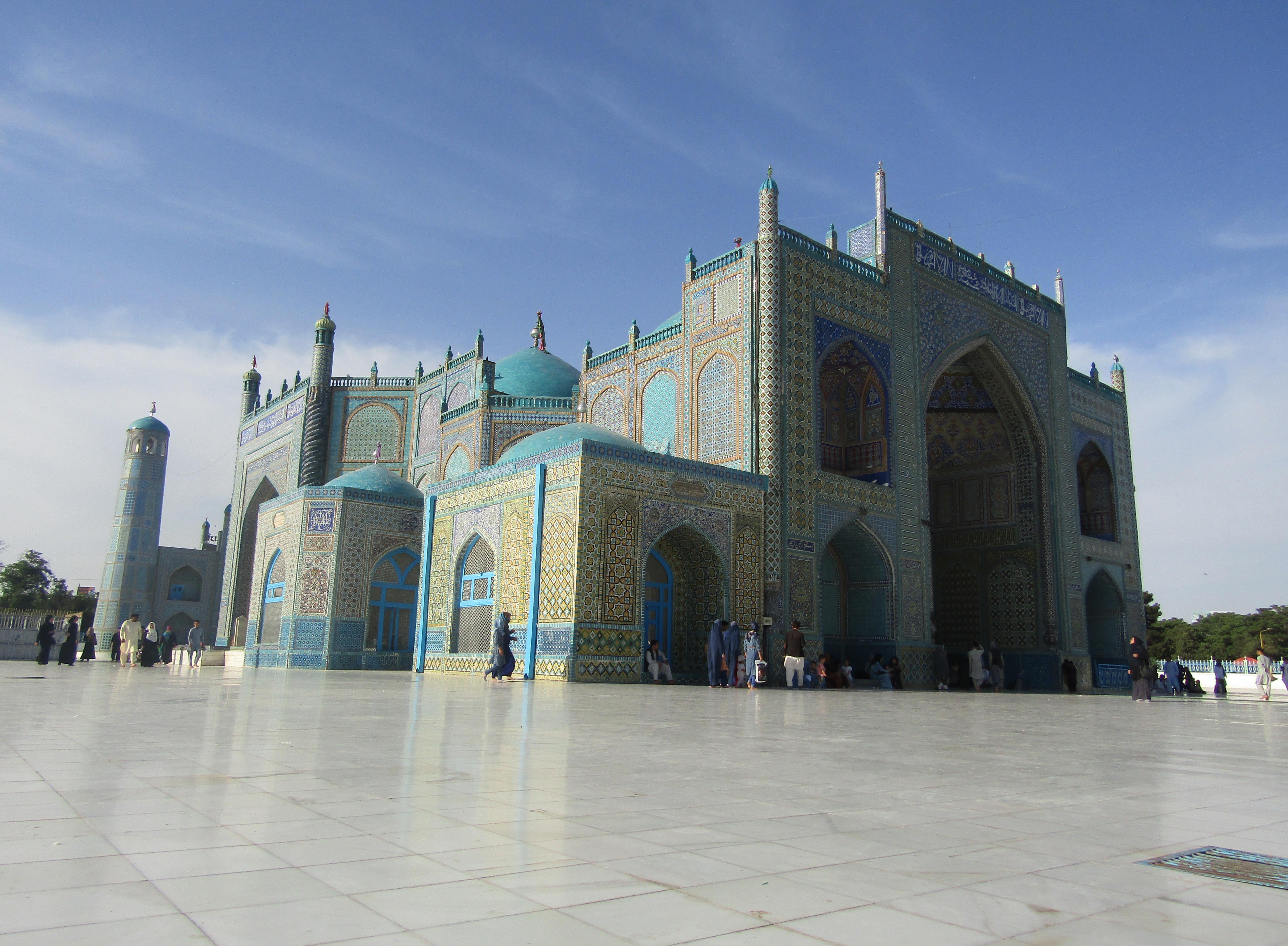(1)(1).jpg)
Blue Mosque
Afghanistan holds a unique position within South Asia, shaped by its role as a cultural and geographic crossroads between the Indian subcontinent, Central Asia, and the Iranian plateau. While often defined by its modern political struggles, Afghanistan’s historical and artistic heritage reflects centuries of intellectual flourishing, spiritual devotion, and architectural sophistication. Its ancient cities, poetic traditions, and monuments attest to a deep-rooted legacy. Among the most iconic symbols of this heritage is the Blue Mosque in Mazar-i-Sharif, a site that encapsulates the devotional and aesthetic grandeur of Islamic South Asia.
Located in northern Afghanistan, Mazar-i-Sharif—literally “Tomb of the Exalted”—owes its name and significance to a powerful legend. According to local tradition, following the assassination of the fourth Caliph, Ali ibn Abi Talib, his followers placed his body on a white camel, which wandered until it collapsed on this site, thereby designating it as Ali’s final resting place. Though mainstream Islamic belief places Ali’s tomb in Najaf, Iraq, this competing tradition took deep root in Afghan religious culture. In the twelfth century, Seljuk Sultan Ahmad Sanjar commissioned the construction of a shrine based on dreams that revealed the burial location. Though destroyed during the Mongol invasions, the shrine was rebuilt in the late fifteenth century under the Timurid ruler Sultan Husayn Bayqara. The mosque standing today is the result of several phases of reconstruction and embellishment, and remains one of the most important Islamic sites in Central and South Asia.
Architecturally, the Blue Mosque—or the Shrine of Hazrat Ali—is a remarkable example of Persianate Islamic design. Its luminous blue-glazed tiles, extensive calligraphy, and sweeping courtyards present a harmonious synthesis of sacred geometry and ornamental elegance. The main structure features a central chamber crowned by a dome nearly 15 metres wide, flanked by minarets and surrounded by lush gardens. The complex, which covers over 2,000 square metres, includes arcaded corridors, open prayer spaces, and secondary shrines. The use of cuerda seca tilework, mirrored ceilings, and vegetal arabesques contributes to the mosque’s reputation as one of the finest examples of Islamic architecture in the region.
One of the most striking features of the site is the presence of hundreds of white doves that inhabit the mosque grounds. Revered by visitors and caretakers alike, these doves have become inseparable from the spiritual atmosphere of the shrine. The birds, undisturbed by human activity, serve as living symbols of peace, purity, and divine favour, enhancing the site's mystical aura and reinforcing its status as a place of spiritual transformation.
Today, the Blue Mosque remains an active site of pilgrimage and devotion. During the spring festival of Nowruz, thousands of Afghans gather for the Jahenda Bala ceremony, in which a sacred banner is raised in honour of Ali. In this way, the shrine functions not only as an architectural marvel but as a dynamic centre of religious, social, and cultural life. On South Asian Heritage Day, the Blue Mosque stands as a testament to Afghanistan’s enduring contribution to the region’s shared spiritual and artistic heritage.


